I recently returned from Tunisia, where I played in the Sahara Expedition LARP organized by Chaos League. This was a Live Action Role Play game loosely based on the stories of H.P. Lovecraft, in which we were seeking the (fictional) lost city of Zerzura in the (actual) Sahara Desert. It was one of the most intense LARPs I’ve ever played.
This report contains SPOILERS.
LARP is a big tent, incorporating many types of game, and Sahara Expedition was of the species “International Blockbuster LARP,” which means that it had a large cast (about 80 players) drawn from all over Europe and the USA, a realistic setting (a hotel and two campsites in the Sahara Desert), and very substantial advance preparation by the organizers and players to deliver a fully immersive experience. Each player was preassigned a character with a detailed background and personality traits — my character sheet was about twelve single-spaced pages — and we were expected to arrive with appropriate costumes and equipment for the 1934 setting. In addition, many period-appropriate props and set pieces were provided by the organizers, along with tents, mattresses, and three delicious meals each day (I was extremely impressed by the food, especially given that it was being prepared from scratch by a small crew in the middle of the desert).
Although this game was inspired by the works of H.P. Lovecraft, it wasn’t based on any specific Lovecraft story and it certainly did not include Lovecraft’s sexism or racism. Characters were all written without specifying gender or race and we were free to play our character as any gender we chose. Most of the players were white — I believe there were two people of color and one Asian — but where tensions existed between the European player characters and the local people they took place mostly offstage and were based on differing priorities rather than any sense of superiority or inferiority. What the game did draw from Lovecraft was a sense of “cosmic horror” in which we were forced to confront situations and phenomena far beyond mortal ken and face vastnesses of space, time, and power which strained the human mind even to contemplate. This was not the kind of horror LARP in which costumed NPCs jumped out from behind dunes to frighten the players — the horror was instead existential and subtle. But, as we were warned at the beginning, it wouldn’t end well for any of us.
The expedition was a joint venture of four institutions: the Royal Geographic Society handled cartography, documentation, and logistics; Miskatonic University handled archaeology, art history, and linguistics; the W. Isynwill Foundation handled clairvoyance and spiritism; and the Legion handled security and medicine. Each player was associated with one of the institutions, and the first letter of our character names and a specific color of scarf or clothing made it immediately obvious which institution a character belonged to. (Having every member of the Royal Society’s name begin with R was simultaneously very helpful and extremely confusing, because it could be difficult to keep over twenty R-names straight.) In general the relationships between the groups were cordial and cooperative, as we all worked together to solve the many mysteries and obstacles the expedition encountered in the desert. Most of the conflict in the game was interpersonal or with the inimical desert and cosmic forces.
Each of us had a specific job to do. I was part of the Royal Geographic Society’s Documentation Department, tasked with recording the expedition’s discoveries and producing a documentary film of the expedition. I myself was the scriptwriter (typecast much?) and I worked with the director, assistant director, cinematographer, still photographer, and actor. (Yes, just one actor. He was very good.) My partner Amy, diving into the deep end on her first LARP, was the still photographer. The Documentation department didn’t have any specific responsibilities regarding digging up artifacts in the desert, decoding ancient tablets, mapping routes, or conducting seances with the spirits of long-dead pharaohs, but we did get to be present for all of those. As with the Documentation departments in which I’ve worked in tech, we had a top-down overview of the whole project rather than being siloed into just one specialty, and that was pretty cool.
On the first day of the game we awoke in a four-star hotel on the edge of the desert, where we had a full day of out-of-character workshops to acquaint us with the other members of our institution and department, the equipment and responsibilities of our individual jobs, and the various techniques and metatechniques that would keep the players physically and psychologically safe in the game (including safewords and techniques to escalate or de-escalate inter-character conflict). Then after dinner, we put on our costumes for an in-character gala to celebrate the beginning of the expedition. This was, for many of us, the first time our characters were meeting each other before setting off for the desert, and given that we would be working closely together and many of us had previous relationships with other characters it was a bit of a scrum, with everyone trying to make contact with all their work and social relations at once.
Those previous relationships were an extremely important part of the game. It was a bit like Lost, in that the number of people who had extremely significant backstory with other characters — many of whom had not seen each other for years or decades until happening to find each other on the same expedition — was far beyond what chance alone could explain. As players we knew that this was to create drama, but as characters we suspected that there were dark and mysterious forces at play. “The veil is thin here,” we frequently told each other. So between reconnecting with long-lost loves or enemies, doing our jobs, and trying to find the clues and unravel the mysteries to make our way to the lost city of Zerzura, we did not lack for things to do each day.
On the morning of the second day we checked out of the hotel (leaving behind all inessential baggage to be picked up after the game) and piled into a caravan of 4×4 vehicles, driven by professionals, which took us across the trackless desert to our campsite. “Bouncing across the Sahara Desert in a 4×4 had not been on my bucket list,” I said as we powered up one side of a dune and slid down the other, “but now I’m adding it so I can cross it off.” The campsite itself consisted of one large tent for meals and group gatherings, just big enough for the 80 of us; several medium-sized tents for headquarters, cooking, and medical (one for in-character medical and another with real doctors); and about 14 traditional Berber tents with six mattresses each for sleeping. These were open on one side and were held up with unfinished sticks, but were quite sturdy and perfectly adequate for the conditions. (It was in the 70s-80s F during the day and 50s-60s at night.) We divided ourselves up among the tents by institution and, where feasible, by department.
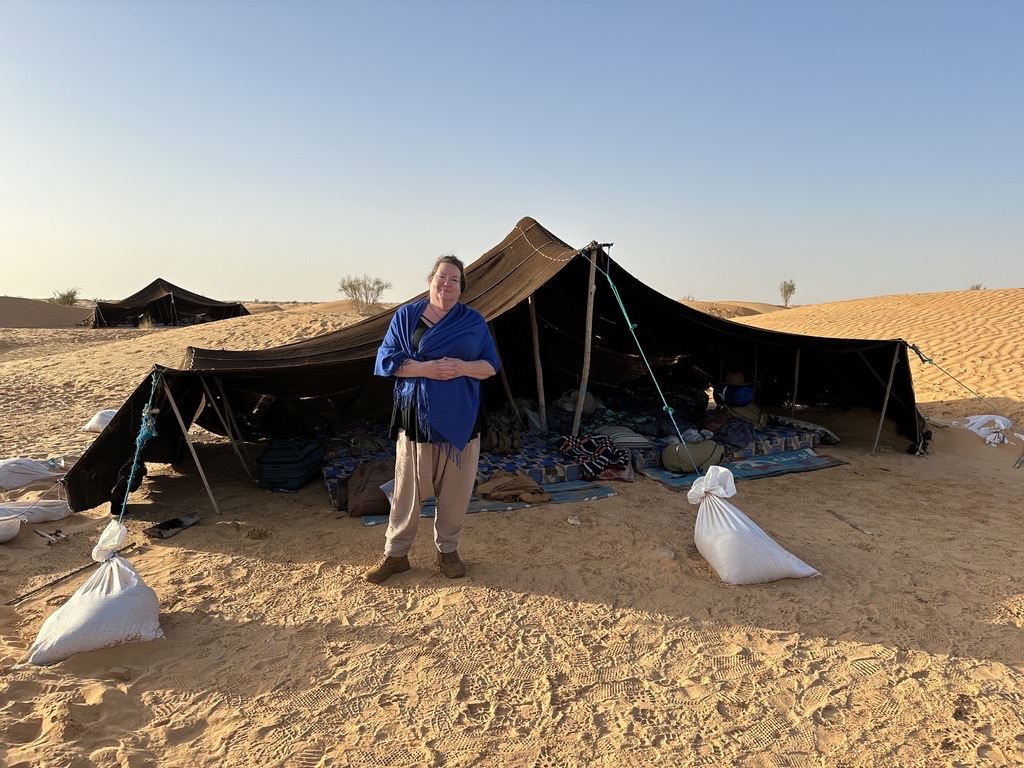
We really were deep in the Sahara Desert — an hour’s drive from the nearest town, surrounded by miles and miles of nothing but sand and the very occasional bush. We were sufficiently equipped with food and drinking water, but there were no showers, no sinks, and for toilet facilities we had “the world’s largest litterbox.” (We were instructed to bury our waste, including toilet paper, but to pack out any wipes or other trash.) The term “taking a dune” quickly took over from “going to the bathroom.” And it was sometimes a bit of a challenge to walk far enough from camp for a bit of privacy without either getting lost (especially at night) or running into someone else on a similar errand.
Each day we had a schedule of meals, morning and afternoon work sessions, and meetings with our departments. It was kind of a workplace LARP, and in addition to doing our jobs we also had to file reports with our superiors (and they with theirs) and coordinate with other departments. The archaeology and art history departments, coordinating with cartography, went off into the desert on “sub-expeditions” to dig up new sites whose locations had been determined by examination of cuneiform tablets, decorated vases, and notes from the previous, lost, expedition, and the Documentation team tagged along to record the excavation. Each sub-expedition unearthed new artifacts and information, which when examined and decoded led to additional new sites and new insights into previously unearthed artifacts. Occasionally photographs would come back from the lab showing people and markings that hadn’t been visible when the photo was taken. The spiritualists and astral travelers of the Isynwill Foundation performed seances and rituals on the artifacts as well, which revealed more clues. (In-game we were expected to take the insights of the spiritualists as seriously as those of the archaeologists and linguists.) Each new clue led us closer to the lost city of Zerzura.
But there were also forces trying to stop us from reaching our destination. We found evidence of recent rituals in the desert, with protective amulets and messages of warning, indicating that the local people were opposed to our mission. Our supply caravan vanished, leaving only a skeleton gnawed clean by beetles and a letter demanding that we turn back. Ancient documents, when translated, warned of a nameless evil that should not be disturbed. The spirit of the great pharaoh also warned us not to open the gate. But did we listen? Heck no! Every warning made us still more determined to overcome all obstacles and achieve our goal. “To Zerzura!” was our toast and our watchword.
Each of us was provided with a diary in which to record our progress, but we were instructed not to turn each page before it was time, because the diary also included pre-written entries that told us how to behave as we drew closer and closer to our goal… and descended into madness. We knew from the beginning that we would all go mad, but each of us had our own path and our own timeline. My own madness took the form of the increasingly insistent voice of my dead college girlfriend — a woman with whom I and one of the other characters had both been in love back then — calling me a coward for having abandoned her and demanding that I apologize. So I repeatedly dropped to my knees in the sand and apologized tearfully to someone who wasn’t there.
Late in the first day in the desert we received a packet of letters and newspapers from home, which of course had significant news for just about everyone. In my case it was a news article indicating that the parents of my dead girlfriend, acting on new information, had exhumed her body and discovered that she had not died of a fever but of poison! I sought out the other character who had known her back then to deliver the news, which led to an extremely fraught and accusatory conversation in which many old wounds were reopened… and then suddenly her demeanor changed, and I realized I was talking not to my colleague but to our departed lover, who was speaking from Beyond through my colleague’s mouth. (My colleague was from the Isynwill Foundation and for her to be taken over by a spirit was not entirely unexpected.) She repeated her accusations of my cowardice and betrayal; tearfully I insisted that I had loved her and would do anything to make up for the harm I had done. “Avenge me!” she said. “How? When?” “When it is time, you will know.” Then she went calm and said “It has been so long since I have had a body,” then reached out and touched my cheek. “I recognize that touch,” I said, and collapsed in a flood of real tears. The scene — entirely improvised by both of us — had played out with such reality and intensity that I was completely overcome.
When I recovered myself I discovered that my colleague had passed out and now lay completely insensate on the sand. Others came by, attracted by the noise we’d made, and attempted to revive her, to no avail. Eventually members of the Legion physically carried her to the medical tent, where she was attended by both Legion doctors and Isynwill psychics. “How long was she under the spirit’s control?” I was asked. “It felt like 20-30 minutes.” “What? Ten minutes is the limit! She could die! What were you doing, running a seance without support!” “It wasn’t supposed to be a seance! I had no idea this would happen!” Eventually they told me to go to the mess tent and get something to eat while they continued to tend to my colleague. Half an hour later she showed up at the mess tent, demanding to know what had happened. She remembered none of it.
After my head had cleared I considered what I’d learned, using both in-game and out-of-game information. If I were to avenge her during the game, that implied that the murderer was someone who was present in the Sahara… and my colleague and I were the only characters who shared that bit of backstory. So, I concluded, it must have been my colleague who had poisoned our mutual girlfriend, jealous that she had loved me more than her, and “when it was time” she would, I guessed, confess the act and I would be called upon to avenge her. But could I really take a living person’s life on the say-so of a ghost? I met with my colleague’s player out-of-character and discussed the mechanics of a choking scenario. (There are stage combat techniques to create an impressive choke without risk of harm to anyone.) We were both familiar with these techniques and discussed time, place, and boundaries. And then I asked “So… did you kill her?” “What?” she replied, completely blindsided.
It turned out that the whole “avenge me” thing had been something the other player had improvised, not something from her diary or character sheet! So I reconfigured our confrontation, instead simply meeting her in-character to tearfully discuss our mutual lost love and discuss the fact that sometimes “vengeful spirits” were not actually who they claimed to be. We had a very sweet reconciliation on a dune and stared off into the sunset side by side.
Meanwhile, we drew ever closer to Zerzura. On the second day in the desert we set off across the dunes, a two-hour walk standing in for a fourteen-day trek, following clues found in a newly discovered diary from the previous, lost expedition. Our baggage followed, on a caravan of actual camels. And then we arrived at the previous expedition’s camp, which stood empty and untouched. There we found additional documents revealing the previous expedition’s fate and outlining the final rituals to open the gate to Zerzura! All we had to do was wait for the stars to align.
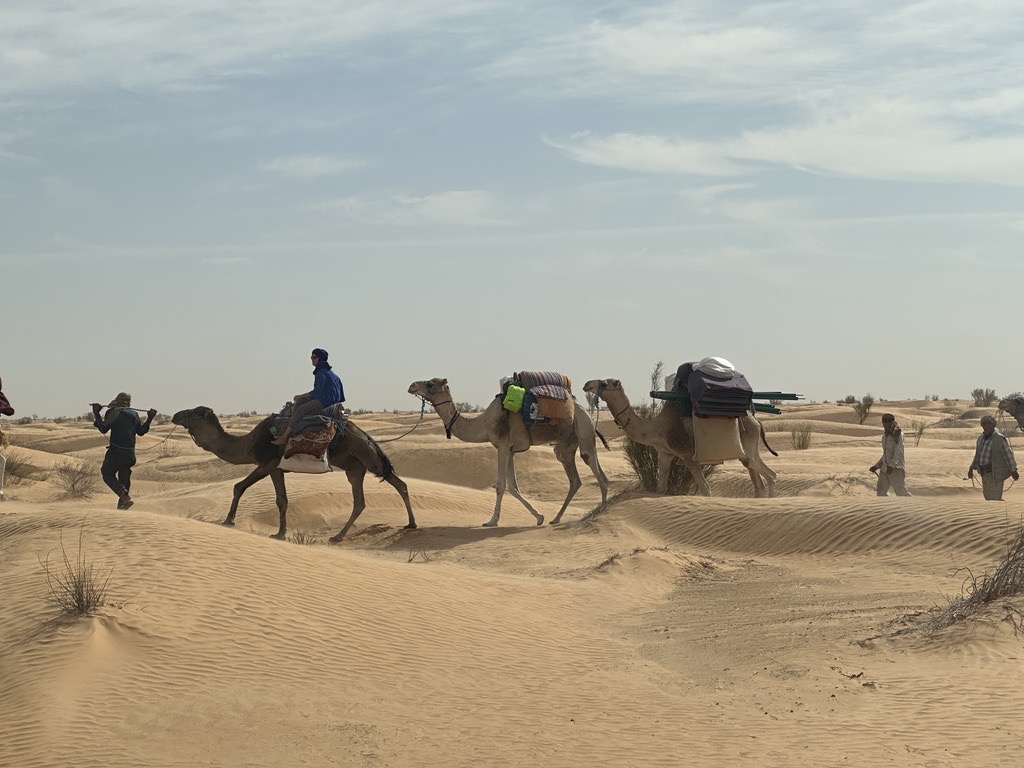
By this point I, both in-character and out, had what I’d describe as “senioritis,” which is to say that I was no longer paying a lot of attention to my job or interpersonal relationships but was prepared to see out whatever came next. We’d come this far, and turning back was not really an option. My partner and fellow player Amy mused out-of-character that we might possibly be in an actual cult, and at that point I couldn’t say for sure that wasn’t the case.
The sun went down and the stars came out, a vast and spectacular desert sky including the Milky Way and numerous shooting stars. We gathered in a circle and began chanting words in a long-dead language. And then…
Okay, I did say at the top of this report that there would be spoilers. I even wrote up a description of the finale. But I feel that, out of respect to the organizers, I should keep that information to myself. If you really need to know what happened, send me a private message or email. Suffice it to say that it was spectacular and a quite satisfactory ending to an amazing LARP.
And no one lived happily ever after.
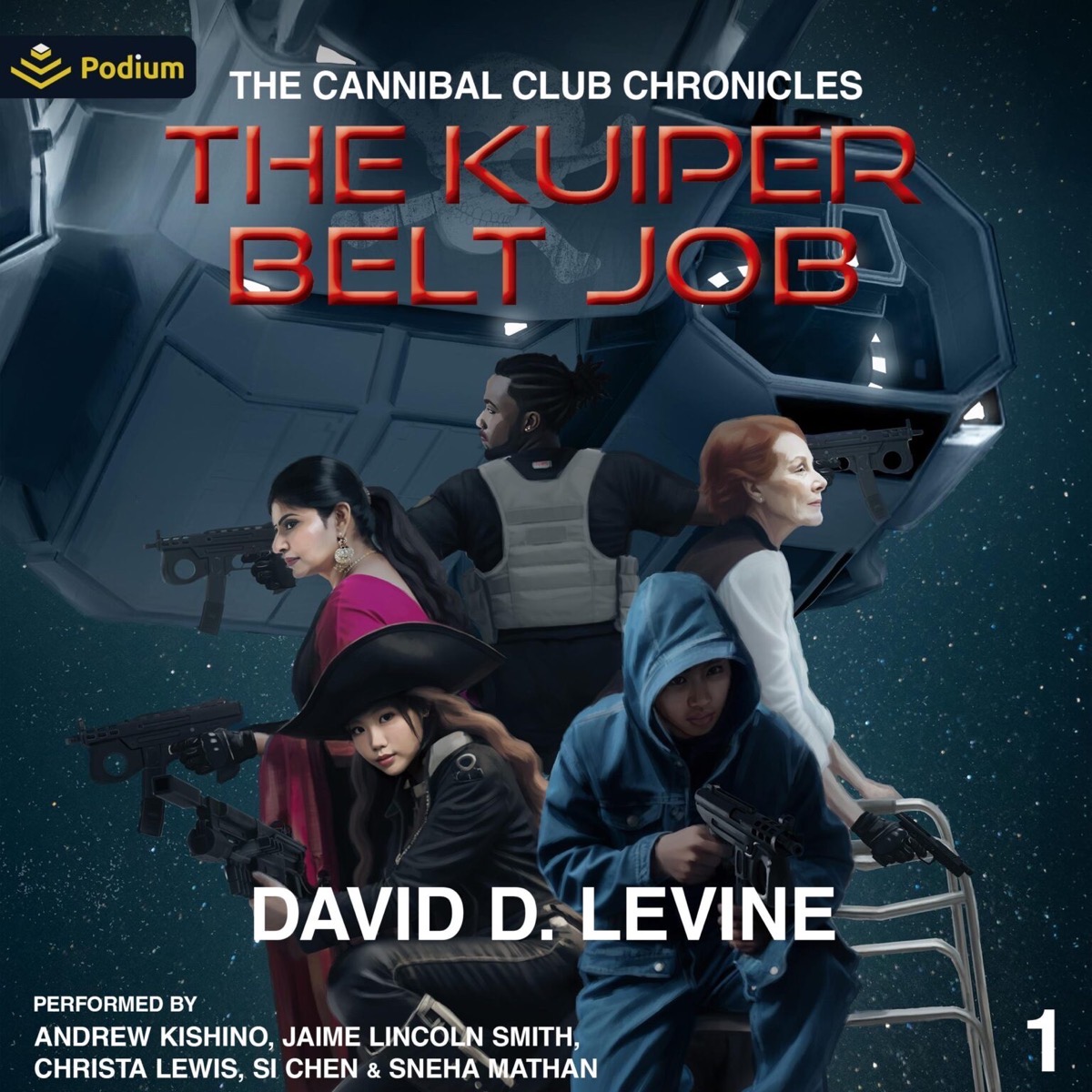

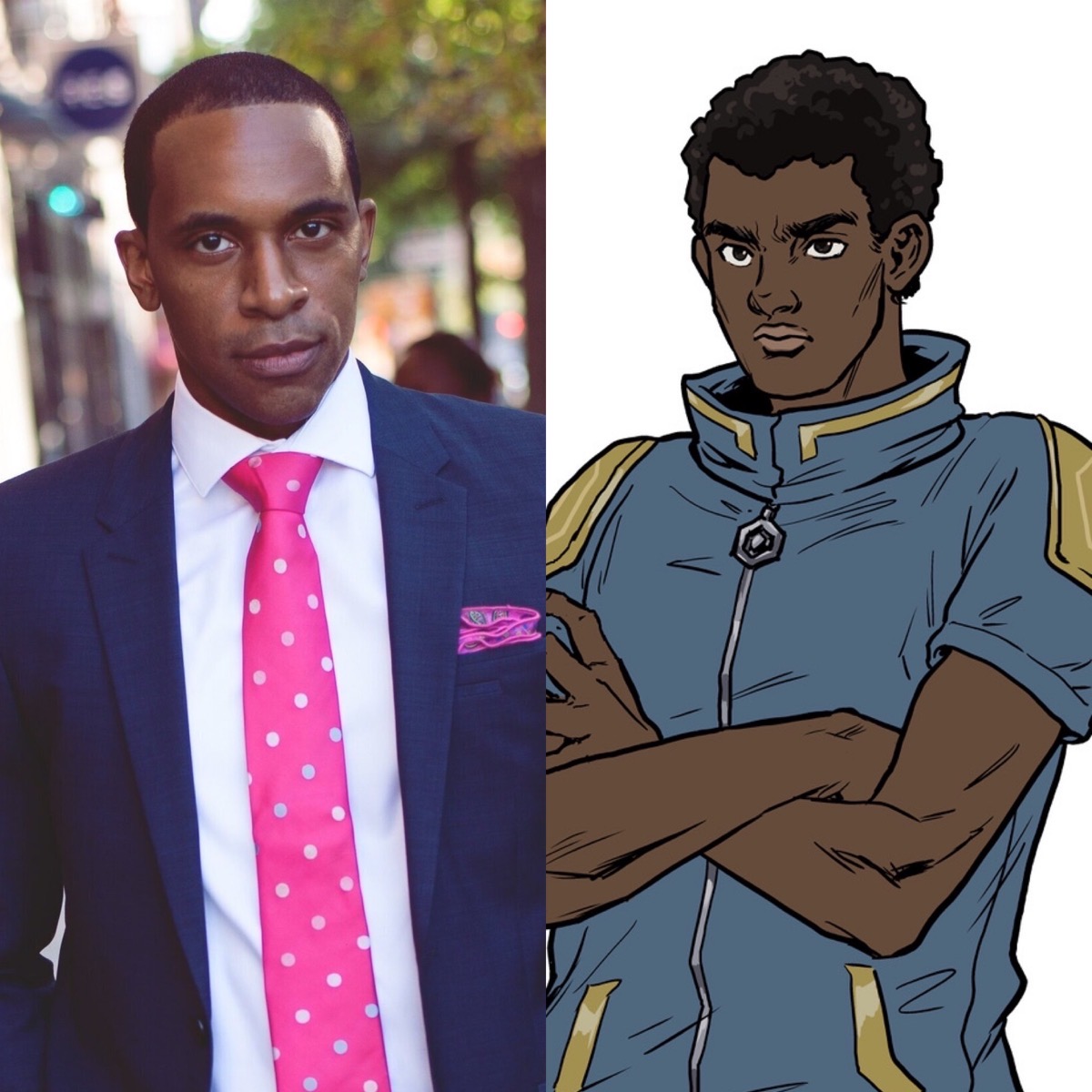

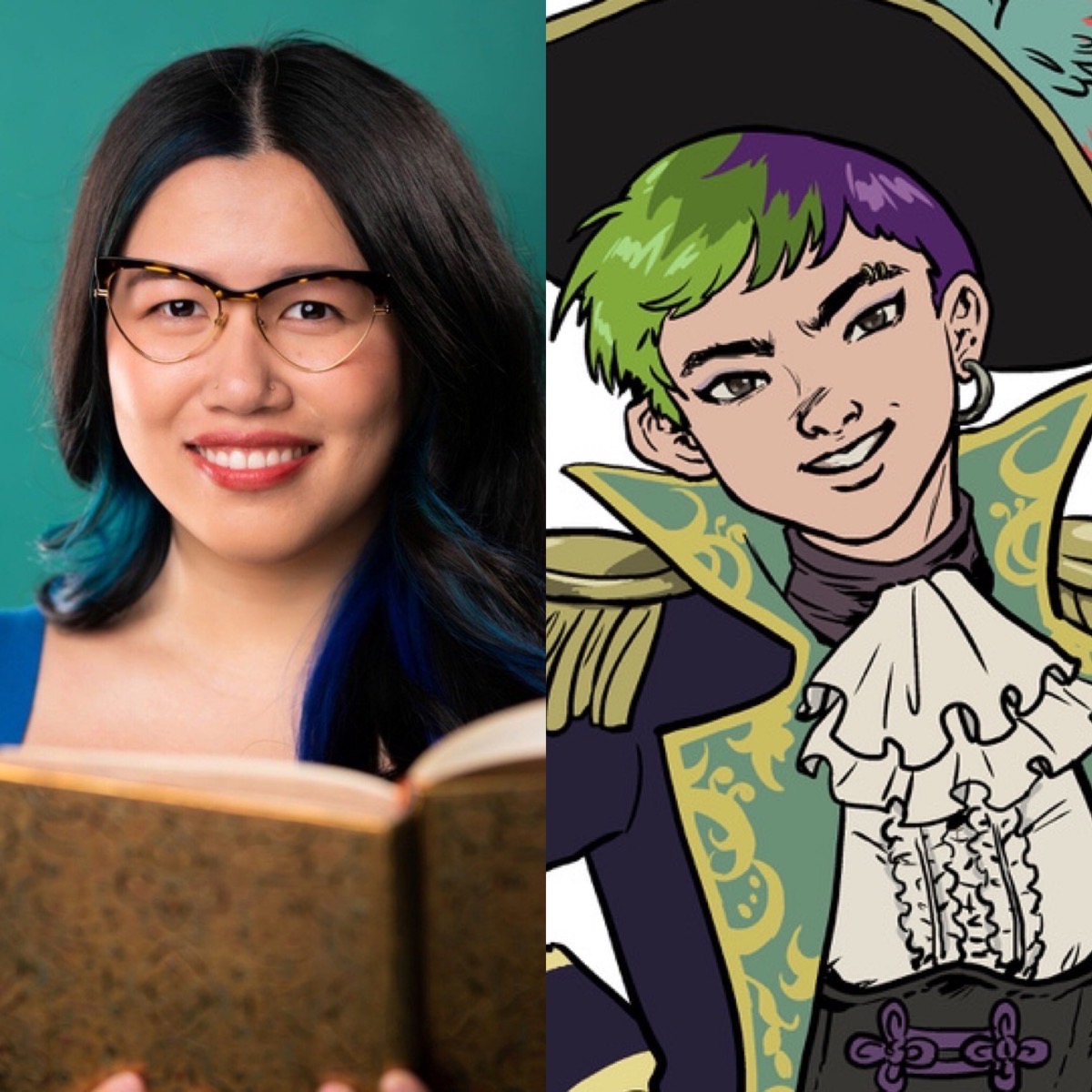
Recent Comments